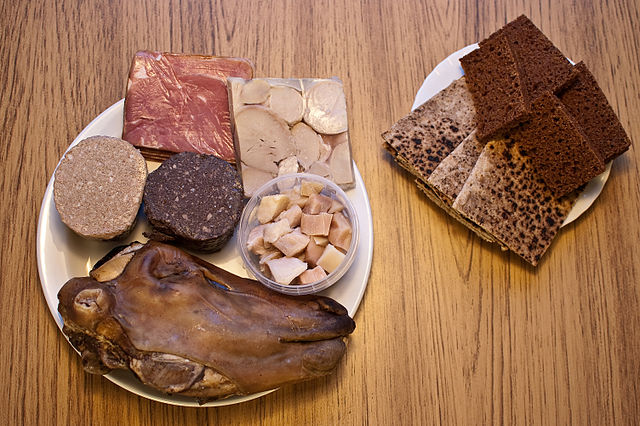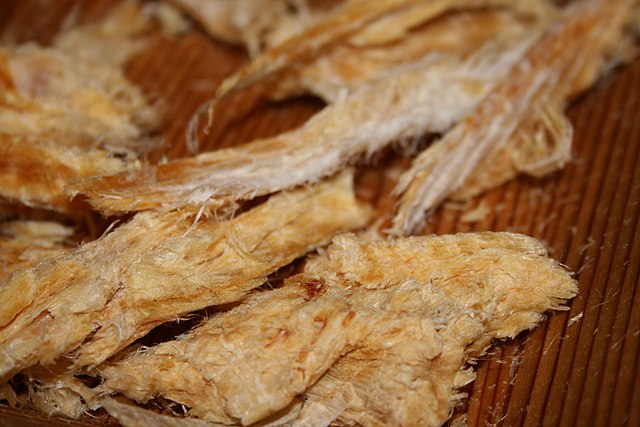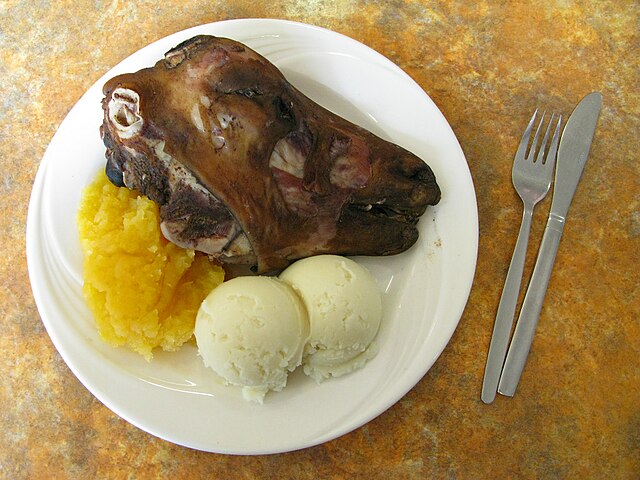Þorramatur is a selection of traditional Icelandic food, consisting mainly of meat and fish products cured in a traditional manner, cut into slices or pieces and served with rúgbrauð, butter and brennivín. Þorramatur is consumed during the Nordic month of Þorri (Thorri), in January and February, particularly at the mid-winter feast of Þorrablót (Thorrablot) as a tribute to old culture. Being thus connected with the tradition of Þorrablót festivals, Þorramatur is most often served as a buffet.
Left (from top to bottom, left to right): Hangikjöt, Hrútspungar, Lifrarpylsa, Blóðmör, Hákarl, Svið. Right: Rúgbrauð (dark brown in color), Flatbrauð
Lifrarpylsa: liver sausage, cooking in a pot
Harðfiskur: wind-dried fish
Svið: boiled sheep's head, served here with mashed potatoes and mashed turnips
Traditional foods are foods and dishes that are passed on through generations or which have been consumed for many generations. Traditional foods and dishes are traditional in nature, and may have a historic precedent in a national dish, regional cuisine or local cuisine. Traditional foods and beverages may be produced as homemade, by restaurants and small manufacturers, and by large food processing plant facilities.
Bryndzové halušky (potato dumplings with sheep's-milk cheese) is a traditional food of shepherds in Slovakia.
Freshly harvested Bambara groundnuts
Wrapped humitas being cooked
A classic poutine is made with french fries, cheese curds and gravy.








